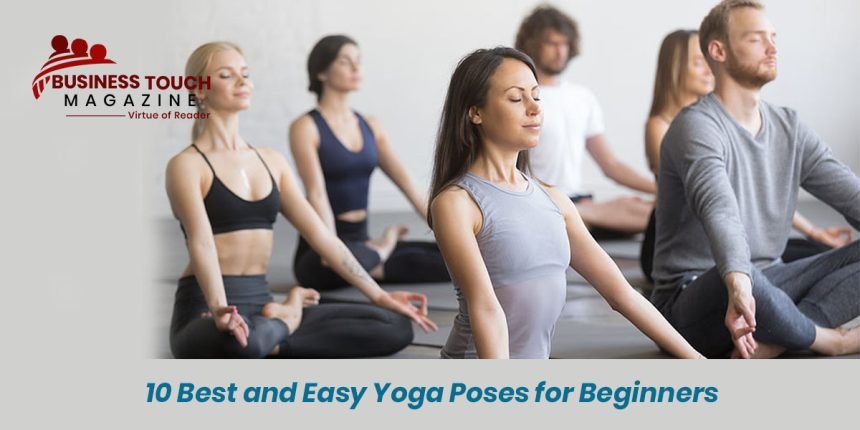New to yoga? Start here with beginner yoga poses and the best yoga poses arrangement that is essential for you to build strength and confidence to take your yoga practice deeper. As a beginner to yoga, you might feel overwhelmed by the number of poses and their odd-sounding names. Relax- Here are steps that can help you start the gradual processes of yoga then roll out on a yoga mat for the best yoga workout.
1.Mountain Pose (Tadasana)
Stand with your toes together and heels slightly apart, hang your arms beside the torso. Place your weight evenly on your feet. Firm your thigh muscles while rotating them inwards Relax your shoulders and roll them back and down. As you inhale, elongate your torso, and when you exhale release your shoulder blades away from your head.
2.Child pose (Shishuasana)
Alleviates constipation and soothes the nervous system. Start with kneeling on the floor, with your knees wider than your hips, and toes pointed and together. Stretch your arms out on the floor in front of you, shoulder-width apart. Rest your forehead on the floor. If your knees or hip joint feels tight, place a rolled-up towel or pillow.
3. Tree Pose (Vrksasana)
Tree pose improves balance and stretches muscles surrounding the hip. Start with your feet together and place your right foot on your inner left upper thigh. Press your hands and find a spot in front of you that you can hold in a steady gaze. Hold and breathe for 8-10 breaths then change sides. You can stand with your back braced against a wall if you feel unsteady in this pose.
4.Triangle (Trikonasana)
Triangle is a wonderful standing posture to stretch the sides of the waist, open up the lungs, strengthen the legs, and tone the entire body. Stand with your feet wide apart. Stretch your right foot out (90 degrees) while keeping the leg closer to the torso. Inhale and as you exhale rest your right hand on your shin, ankle, or the floor outside your right foot, Stretch your left arm toward the ceiling. Inhale to come up and repeat on the opposite side.
5.Warrior pose (Veerbhadrasana)
Improves balance in the body, augments stamina, and releases stress in the shoulders. Helpful for those leading a sedentary lifestyle. Stand in Mountain Pose. Raise your arms perpendicular to the floor (and parallel to each other). Turn your left foot 45 to 60 degrees to the right and your right foot out 90 degrees to the right. Align the right heel with the left heel. Exhale and rotate your torso to the right. Exhale and bend your right knee over the right ankle so the shin is perpendicular to the floor. To come up, inhale, straightening the right knee. Turn the feet forward and release the arms with an exhalation.
6.Downward-Facing Dog (Adho Mukha Svanasana)
Downward dogs stretch the back of the legs, spine, hamstrings, palms, and feet. It also strengthens shoulders, arms, legs, and abdominal muscles. Put your hands on the floor underneath your shoulders. Place your knees on the floor underneath your hips. Tuck your toes and lift your hips toward the ceiling. Your head should be between your arms, facing your knees, and your backs should be flat.
7. Upward-Facing Dog (Urdhva Mukha Svanasana)
It is a powerful pose that awakens upper-body strength and offers a wonderful stretch for the chest and abdomen. Lie on your stomach on a mat. Stretch your legs back, with the tops of your feet on the mat. Bend your elbows and spread your palms on the mat beside your waist. Inhale and press your inner hands firmly into the mat. Then straighten your arms and simultaneously lift your chest up and your legs a few inches off the mat. Pull your shoulders back, squeeze your shoulder blades, and tilt your head toward the ceiling, to open up your chest.
8. Seated forward bend (Paschimottanasana)
Stretches the lower back, massages the abdominal and pelvic organs, and also tones the shoulders. Sit on the floor with your buttocks supported on a folded blanket with your legs extended in front of you. Breathe in and raise your hands over your head and stretch. Extend the arms forward, reaching for your feet. Lift your chest and engage your lower abdominals. Hold the pose for up to 10 breaths before slowly releasing with an inhalation.
9.Bridge Pose (Setubandhasana)
Begin lying comfortably on your back in a flat position and place your feet hip-width apart. Press firmly onto your feet and lift your butt up off the mat. Interlock your palm and press the shoulder toward the floor. Imagine dragging your heels on the mat towards your shoulders to engage your hamstrings. Hold for 8-10 breaths then lower your hips down and repeat.
10.Savasana (Corpse Pose)
No yoga session is complete without Savasana. Lie down on your back. Separate your legs. Bring your arms alongside your body, but slightly separated from your torso. Turn your palms to face upwards. Let your breathing occur naturally. If your mind wanders, you can bring your attention to your breath but try to just notice it, not deepen it. Stay for a minimum of five minutes. Ten minutes is better.
Conclusion
Yoga is best practiced early in the morning or late in the evening. A morning yoga session can be very vigorous and include complete practice. No matter what time of day or season you practice, always end with Savasana (Corpse Pose). We recommend starting with two or three sessions per week, each lasting an hour or an hour and a half. It’s fine if you can only commit to 20 minutes per session. Don’t let time restrictions or unreasonable expectations get in the way of your success.




